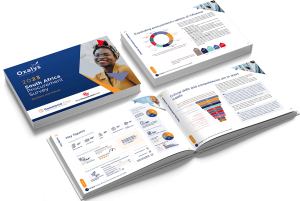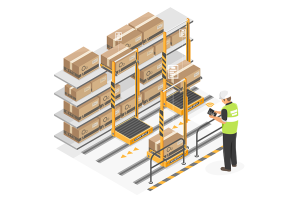 By Anant Kadiyala, Director: Blockchain and IoT Industry Solutions, Oracle
By Anant Kadiyala, Director: Blockchain and IoT Industry Solutions, Oracle
Shrinkage, wastage, counterfeiting, contamination, mishandling, logistical delays and other challenges continue to plague today’s supply chains − despite decades of investments and improvements along the way.
Companies have limited visibility into who their end-users are and how end-users actually use/handle their products on a day-to-day basis. Recent recalls with romaine lettuce, Takata airbags, and a myriad of others, have shown that supply chains have room to tighten further and improve visibility across the board.
In addition, new technology developments have been triggering rapid transformations across all industry verticals. Cloud computing, mobile, the Internet of Things (IoT), augmented reality (AR), machine learning and, recently, blockchain, have all brought a wave of new possibilities to customer experiences and expectations. Consumers prefer high-quality options, safer products, ethical sourcing, accountability, transparency and quicker delivery − along with flexible ways to buy and use products. The click-and-collect paradigm in retail is a result of such technology-enabled possibilities.
To accommodate customer and industry demands, supply chains are doing the heavy lifting of managing a transformation that is nothing short of epic.
Minimising business entropy
According to Nobel-prize winning economist Oliver Williamson, when the overall cost of transactions change, the underlying economic order (institutions, business processes, regulatory bodies and supporting industries) also changes.
Perhaps it is easier for those of us who are not economists to understand the full impact of these kinds of changes in business terms: What if we could easily track the entire lifecycle of a product? What if we gave all the stakeholders in a supply chain a trusted way to share trusted information? What if we could quickly trace the root causes of an incident (or prevent an incident from happening altogether)? What if we could mitigate waste and increase predictability in even the most complex business processes?
On the customer experience side, too, what if we could give them multiple flexible buying and consumption models for the same products? What if we could provide them with better transparency about the products, ingredients, provenance and other information in a safe, secure and managed manner?
We can. Interestingly, the same set of technologies that enable tighter, efficient supply chains, can also be deployed to unlock better customer experience, engagement and loyalty.
The fab five
So, what are these technologies all about? Let’s take a look:
Internet of Things (IoT): over the past ten years, there has been remarkable progress with sensors, instrumentation, communication and machine learning. Inexpensive but effective sensors continuously monitor and stream data over a variety of communication channels to the cloud or to local networks.
By applying machine learning-based inferences, many aspects of business operations can be streamlined and issues can be caught immediately and acted upon. In supply chain, we see the IoT applied to track shipping containers, fleets, product location and condition tracking. Inside the warehouse and in the yard, the IoT is used to remotely locate, manage and control machines.
Artificial intelligence (AI): the ability to make accurate inferences and predictions from data has enormous business benefits. AI is an umbrella term for a range of capabilities to process and analyse data, and enables the decision maker to make better-informed decisions versus relying on gut instinct or precedence. AI is employed to either augment the human with better decisions or to automate certain aspects of the business process (especially the repetitive kind).
Today’s microprocessors, sophisticated mathematical and statistical algorithms, developer tooling and cloud computing make it quite viable to leverage this technology. In supply chain, AI is applied in procurement, inventory, warehouse management, supplier relations and logistics.
Mixed reality (MR): until recently, augmented reality (AR) and virtual reality (VR) have been popular mostly in the entertainment realm. MR is an umbrella term that covers the spectrum of AR and VR. When we overlay digital information onto the physical world, our interactions with the world change in very fundamental ways. How we accomplish a task can be radically improved.
While MR is in its infancy, it is gaining attention and adoption in supply chain. For example, stock pickers in some warehouses use AR to get the next best pick of recommendations. Just like GPS gives us turn-by-turn directions, a stock picker in a warehouse can be much more efficient with AR-guided picking. In field service, repair technicians are leveraging AR to get step-by-step repair instructions. With VR, a manager can virtually track and manage multiple locations simultaneously and get the needed information instantaneously from the IoT data streamed from connected machines, vehicles, warehouses, factories and goods. This level of instant access of information to stakeholders is quite unprecedented.
Robotics: robots have been a mainstay of manufacturing for many decades now. With recent improvements with machine learning and sensing, robots are able to perform many wide-ranging tasks. Many tasks in a warehouse are repetitive and, therefore, lend themselves to robot-based automation very well. Robots are employed to move goods from one area of a warehouse to another for actions like pick-and-place.
In addition, drones with advanced imaging technologies can tally the inventory of goods in a warehouse much more effectively than humans can, and in a fraction of the time. In the near future, we will also see self-driving trucks and sidewalk transporters that move goods to customers quickly.
Blockchain: this is a new and rapidly-emerging technology. Blockchain is a platform, technology architecture and way of solving a certain class of problems, all at the same time. By blending various concepts from distributed computing, networking, cryptography, economics and mathematics, blockchain offers us the ability to have a common, tamper-resistant, shared, confidential, single version of truth for all the participants in a network.
In supply chain, blockchain is being considered (or leveraged) in tracking product provenance, product journey, customs declaration automation, paperless bill-of-lading, change of ownership/custody as well as trade finance and settlements.
Reaping the benefits
The cohort of these five technologies is helping supply chains to lower costs, minimise waste, reduce risk, lower losses, improve transparency and deliver higher customer satisfaction. While each of these technologies can be used independently of the other, leveraging them in conjunction with each other unlocks new levels of efficiency and possibilities. Like most technology initiatives, taking baby steps at first and scaling from there on mitigates the risk of failure.
In truth, the difficult part is not implementing the technology, but rather implementing the mindset for change − even when the change is both desirable and inevitable.


























